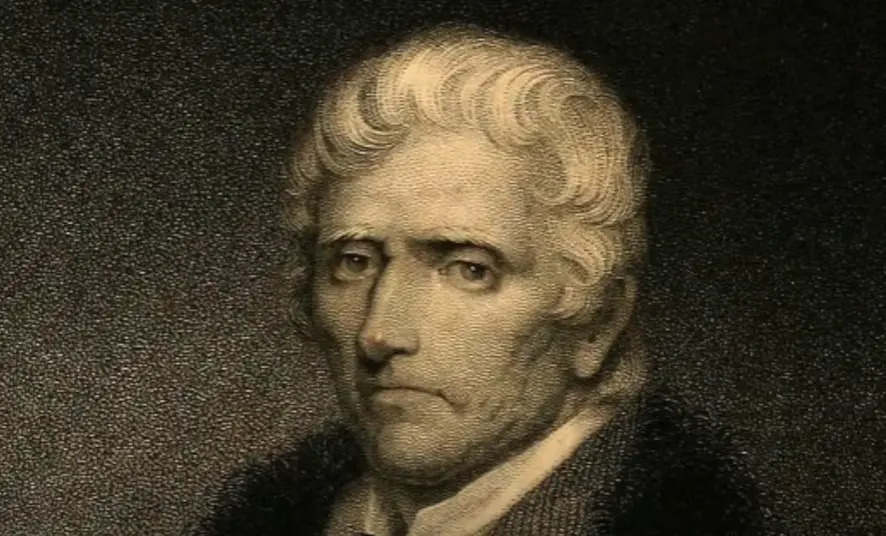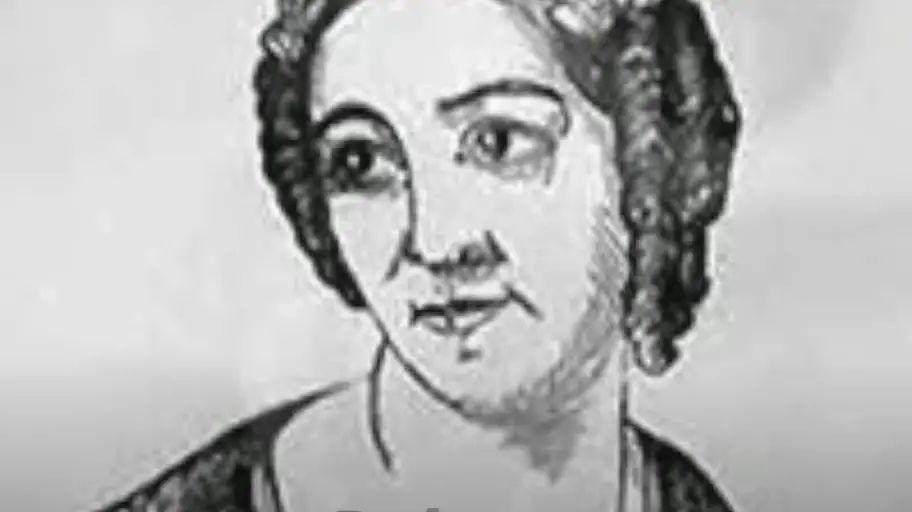WHO WAS DANIEL BOONE?

DANIEL BOONE
Undoubtedly, Daniel Boone is among the most well-known frontiersmen in the annals of United States history. In addition to being a superb hunter and trapper, he was also a pioneer.
For the early stages of westward development, Boone’s expeditions were instrumental in facilitating the establishment of new communities on the frontier. Through the Mississippi River in the year 1799, he took his family and other settlers into territory that was inhabited by Native Americans but was claimed by Spain. During the latter twenty years of his life, Boone resided in the state that is now known as Missouri.
The Formative Years of Daniel Boone
DANIEL BOONE FAMILY HISTORY
An immigrant Quaker couple named Squire and Sarah welcomed their sixth child, Boone, into the world on November 2, 1734, in Berks County, Pennsylvania. Boone was the sixth of eleven children. He spent a significant portion of his boyhood looking at the cattle that belonged to his family and exploring the forests that were close to his house.
Boone lacked a formal education. However, Boone was able to read and write, and he frequently brought reading material with him on his journeys into the wilderness. His first rifle was given to him when he was 12 years old, and he went on to learn how to hunt and become an accomplished marksman. He frequently provided his family with fresh meat. It is said that he once stopped a charging panther by shooting it through the heart.
After selling his estate in 1748, Squire Boone relocated his family to the Yadkin Valley, which was located on the border of North Carolina. Joining the North Carolina troops as a wagoner in 1754, Daniel Boone narrowly escaped being killed by Indians during the Battle of Monongahela, one of many American Indian wars in which Boone fought against Native Americans. This was after the French and Indian War had already broken out.
At the Battle of Fort Duquesne, he escaped another Indian assault by stealing a horse and escaping on horseback. As a result, he was able to endure the siege. Boone worked alongside John Findley, a trader, throughout the war. Findley advised Boone about the wilderness that lay to the west of the Appalachian Mountains and was known as “Kentucke.” This area was abundant in wild game and opportunities. Following that, Findley followed Boone on his initial journey to the state of Kentucky.
Daniel Boone’s Advanced Years
Expeditions; French and the Indians War

During the French and Indian War, Boone embarked on a military mission in 1755. This trip was a component of the conflict. During the disastrous defeat of his army at Turtle Creek, which is located close to what is now Pittsburgh, he worked as a wagoner for Brigadier General Edward Braddock.As a survivor, Daniel Boone was able to save his own life by evading the ambush prepared by the French and Indians by riding away on horseback.
The year 1767 marked the first time that Boone was in charge of his own mission. The hunting expedition traversed the Big Sandy River in Kentucky, extending their journey westward until reaching Floyd County.
On December 22, Shawnee Indians apprehended him and one of his colleagues stole their pelts and threatened them that they would never return to the area at any time. Even after Boone had gone home, he had no intention of paying attention to the warning.
In the month of July in the year 1773, Boone made his way back to Kentucky with his family and a group of other immigrants. Disgruntled Indians attacked members of the party in October, including Boone’s son James. They were subjected to severe torture and ultimately slaughtered by the Native Americans, who then compelled the terrified immigrants to return to North Carolina.
The Lord Dunmore’s War
The following year, in 1774, military conflict did actually break out in the form of Lord Dunmore’s War, which was a direct result of the Indian invasion. Boone was dispatched to Kentucky to inform surveyors that war with the Indians was coming. Boone was employed by Richard Henderson’s Transylvania Company to drive the Wilderness Road through the Cumberland Gap and into the heart of Kentucky after the settlers won Lord Dunmore’s War. The Indians gave up their Kentucky lands as a result of this triumph. Boone established the colony of Boonsborough once he arrived in Kentucky, and he invited his family to come and join him.
BoonsboroAt Boonsborough
Indian attacks were common in Boonsborough, and as a result, a significant number of settlers eventually left the state of Kentucky. Jemima Boone, Boone’s daughter, and two of her companions were taken captive by Indians on July 5, 1776. Boone promptly set up an ambush and successfully saved the girls, serving as the inspiration for the historical novel The Last of the Mohicans by James Fenimore Cooper.
When Boone was captured by Shawnee Chief Blackfish in February of 1778, Blackfish took him in as his own son and adopted him. At the Siege of Boonsborough, Boone, however, managed to escape four months later and assisted Boonsborough in their victory over the Shawnee.
In December of 1779, Boone laid the groundwork for the construction of the Boone Station settlement. He moved to what is now West Virginia and served in the Virginia legislature over the course of the subsequent few years.
Slave Owner and Land Speculator
Boone was not very good at business, despite the fact that he was well-known for his leadership in the militia, his hunting, and his surveying. According to the majority of reports, he was described as an aggressive land speculator who frequently incurred significant debt in order to acquire property. A slave owner, Boone had as many as seven slaves at one point in his life. Upon his arrival back in Kentucky in 1795, Boone, who had ample opportunity to see the opening of the Wilderness Road in October 1796, declined to provide testimony in a lawsuit filed against him. A warrant was issued for his arrest, and the majority of his land was turned over to the authorities.
By the year 1798, Boone had lost all of his land in Kentucky due to the fact that he was not a skilled negotiator, his ability to read legal documents was, at best, marginal, and he had multiple lawsuits, losses, and an outstanding warrant for his arrest.
Daniel Boone’s Last Years
Because Boone and his family were concerned about being arrested, they relocated to the Spanish-owned town of Femme Osage in Missouri. Additionally, Boone lost his lands once more after Missouri became a part of the United States of America; however, he eventually regained them and sold the majority of them. In 1807, Meriwether Lewis, the renowned leader of the Lewis and Clark expedition and the governor of the region at the time, appointed him to the position of justice of Femme Osage township. He was a respected leader in the state of Missouri.
Although Boone volunteered to serve in the military during the War of 1812, he was not accepted into the military. He was 78 years old at the time. In the year 1817, the naturalist who had spent his entire life outdoors went on his last hunt into the wilderness that he cherished.
Daniel Boone’s Personal Life
rebecca bryan boone
Boone wed Rebecca Bryan on August 14, 1756, and the couple eventually made their home in the Yadkin Valley. Together, they had ten children, six sons and four daughters over the course of their marriage.

In order to provide for his large family, he engaged in hunting and trapping. A good gun, a good horse, and a good wife were the three things that Boone considered to be the ideal components of a happy life. At first, he was content with these three things. However, Boone’s interest in exploring the American frontier was sparked by the stories of adventure that he had heard from a teamster while he was marched.
Over the course of the fall and winter, he frequently vanished for extended periods of time, only to reappear in the spring in order to sell his pelts to merchants. In 1759, the Cherokee Indians launched an attack on the Yadkin Valley, compelling numerous residents, including the Boone family, to evacuate to Culpeper County, Virginia. Many lengthy journeys through Cherokee territory in the Blue Ridge Mountains were undertaken by Boone while he was serving in the North Carolina militia. According to one account, when Boone was out on a long expedition, Rebecca believed he was dead and became involved with his brother, resulting in the birth of a daughter whom Boone later acknowledged as his own.
The Battle of Blue Licks, which took place in 1782 and was one of the final skirmishes of the Revolutionary War, resulted in the death of Israel, one of Boone’s six sons. Boone himself was present by the time his son passed away.
how tall was Daniel Boone?
Daniel Boone is often cited as being five feet eight or nine inches tall. Numerous others who knew Boone, including his brother-in-law Daniel Bryan, who mentioned his height, blonde hair, and blue eyes, contributed to this description. Though not very tall by today’s standards, Boone’s height was typical for his day.
How Did Daniel Boone Die?
Boone passed away at his home in Femme Osage Creek, Missouri, on September 26, 1820, due to natural causes. At the time of his death, he was 85 years old. His body was returned to Kentucky after being exhumed and reburied there more than twenty years after he had passed away. Boone did in fact exist, and he is still remembered as one of the most accomplished woodsmen in the history of the United States, despite the fact that his figure is surrounded by myths and legends.
The legend that surrounded Boone was so popular in American culture that it was put on the air. In 1964, NBC launched an action-adventure television show about Boone, which lasted for six seasons and starred actor Fess Parker as Boone. An earlier television show about Boone, which was produced by The Walt Disney Company in 1960 and starred Dewey Martin, was available on television.
RELATED: DEMOCRITUS – The Life of an Ancient Greek Philosopher
